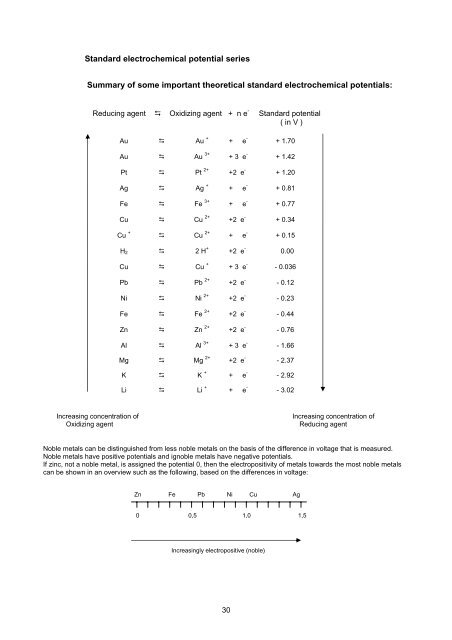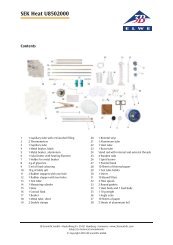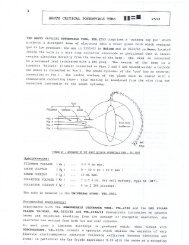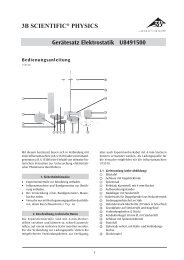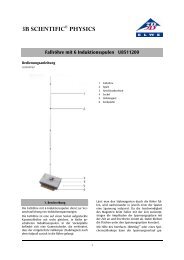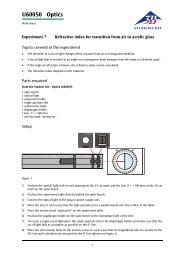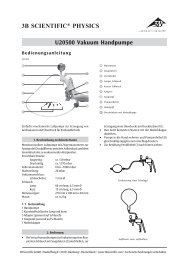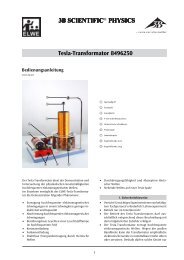3B SCIENTIFIC PHYSICS ELEKTROCHEMIE U11110 ...
3B SCIENTIFIC PHYSICS ELEKTROCHEMIE U11110 ...
3B SCIENTIFIC PHYSICS ELEKTROCHEMIE U11110 ...
Create successful ePaper yourself
Turn your PDF publications into a flip-book with our unique Google optimized e-Paper software.
Standard electrochemical potential series<br />
Summary of some important theoretical standard electrochemical potentials:<br />
Reducing agent � Oxidizing agent + n e - Standard potential<br />
( in V )<br />
Au � Au + + e - + 1.70<br />
Au � Au 3+ + 3 e - + 1.42<br />
Pt � Pt 2+ +2 e - + 1.20<br />
Ag � Ag + + e - + 0.81<br />
Fe � Fe 3+ + e - + 0.77<br />
Cu � Cu 2+ +2 e - + 0.34<br />
Cu + � Cu 2+ + e - + 0.15<br />
H2 � 2 H + +2 e - 0.00<br />
Cu � Cu + + 3 e - - 0.036<br />
Pb � Pb 2+ +2 e - - 0.12<br />
Ni � Ni 2+ +2 e - - 0.23<br />
Fe � Fe 2+ +2 e - - 0.44<br />
Zn � Zn 2+ +2 e - - 0.76<br />
Al � Al 3+ + 3 e - - 1.66<br />
Mg � Mg 2+ +2 e - - 2.37<br />
K � K + + e - - 2.92<br />
Li � Li + + e - - 3.02<br />
Increasing concentration of Increasing concentration of<br />
Oxidizing agent Reducing agent<br />
Noble metals can be distinguished from less noble metals on the basis of the difference in voltage that is measured.<br />
Noble metals have positive potentials and ignoble metals have negative potentials.<br />
If zinc, not a noble metal, is assigned the potential 0, then the electropositivity of metals towards the most noble metals<br />
can be shown in an overview such as the following, based on the differences in voltage:<br />
Zn Fe Pb Ni Cu Ag<br />
0 0,5 1,0 1,5<br />
Increasingly electropositive (noble)<br />
30


